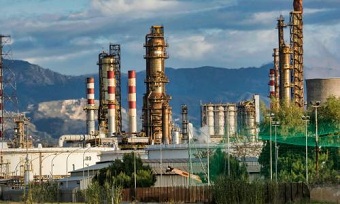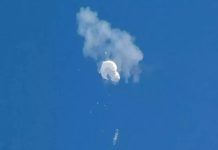The assault on the world’s largest oil-processing plant in Saudi Arabia, among other recent attacks on critical infrastructure facilities, will help drive a more than $700 million increase in global demand for perimeter security equipment, such as counter-unmanned aerial systems (C-UAS), according to IHS Markit.
Twenty-five drones and missiles were used in the Sept. 14 pre-dawn attack that forced the Saudis to shut down half of the country’s oil production, according to the Saudi coalition. The global market for perimeter security equipment — a category encompassing C-UAS solutions as well as other products like uncooled thermal cameras and perimeter security sensors — will rise to more than $2 billion by 2023, up from $1.3 billion in 2018, according to IHS Markit.
“Organizations like airports, sports stadia and critical infrastructure facilities are all concerned about detecting potential intrusions beyond their perimeters,” says Oliver Philippou, Research Manager, Security Technologies, at IHS Markit. “However, amid recent events, these concerns have now expanded into protecting the local airspace from drone attacks. Perimeter security systems that take a layered approach, including thermal, sensors, ground-based radar, and drone detection technology, are a vital tool for detecting and preventing intruders.”
Legislation and regulations are currently hindering the growth of the C-UAS market. The U.S. Federal Aviation Administration (FAA) has not established a basic operating procedure for drone detection and interdiction. However, IHS Markit / Technology expects clarity on the use of drone detection and mitigation systems at airports during the forecast period, paving the way for the tremendous growth in this market. The malicious use of drones has led to the development of a range of C-UAS detection technologies such as radar, electro-optical detection systems, infrared sensors and acoustic detection. The global C-UAS market is set to rise to $542.2 million in 2023, up from $62.4 million in 2019.
Layered perimeter security solutions are particularly useful for countering drone threats, providing multiple means of detecting a potentially hostile flying object. These threats have been at the forefront of security professionals’ minds recently, given the Saudi attack and other incidents such as the events at Dubai Airport in the UAE and at Gatwick Airport in the United Kingdom in 2018.
Drone attacks are relatively cheap and easy to initiate but can inflict major damage. For example, this month’s drone attack at the Abqaiq and Khurais oil facilities reportedly reduced crude oil production by 5.7 million barrels per day. This totaled about half the kingdom’s output, resulting in an expected increase of global oil prices of as much as 15%. These attacks could help force through legislation mandating basic operating procedures for drone detection and interdiction.








